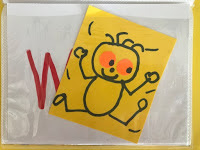A Box for Mommy (Tune: "Polly Wolly Doodle")
I wish I had a little box (Pretend to hold a box in your hands.)
To put my mommy in. (Pretend to put something in the box.)
I’d take her out and go (Take something out of the box
(kiss, kiss, kiss) and kiss in the air.)
And put her back again.
If my mommy were in my box
Were in my box, then she would always know.
School or play, night or day,
How I love her so! (Cross arms over chest.)
I made this box for mother’s day, (Pretend to hold a box.)
It’s full of love for you.
When we’re apart, hold it to your heart, (Put hands over heart.)
And know I’m thinking of you.
Box of Love Necklace
You can collect small boxes that jewelry come in or use matchboxes for this project. Spray paint the boxes and then let the children decorate them with stickers, glitter pens, etc. Glue a small picture of the child inside the box. Punch a hole and attach a ribbon so it can be worn around the neck. Teach children the song and let them present their necklaces at a Mother’s Day tea, or send the boxes home with the words to the song.
My Mom Can

My Mom Can

Let each child make a predictable book about all the things their mom can do.
Hats for Moms
These are adorable hats from paper plates that children can make for their mothers. Cut the inner section out of the plate. Decorate the outer rim with markers. Cut 4” squares out of tissue paper and wad up and glue on the rim to look like flowers. Punch a hole in each side and tie on a 16” piece of string or ribbon. Place the hat on your head and tie under the chin.

LOVE YOU Flower
Trace around children's hands on construction paper and cut out. Glue to a stem and fold down the middle and ring finger to make sign language for "I love you!"
A Gift from the Heart
Make a flip book and write the following on the flips:
Some gifts are round.
Some gifts are tall.
Some gifts are large.
Some gifts are small.





















































